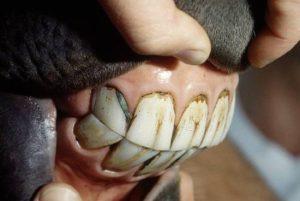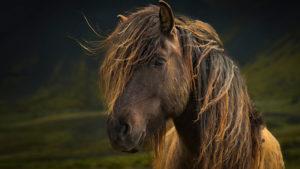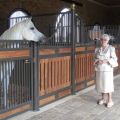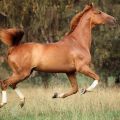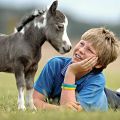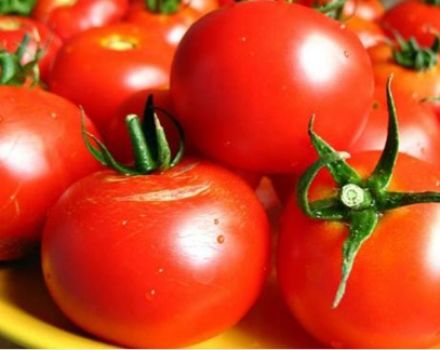History and description of horses of the Karachai breed, maintenance rules and cost
The ancient aboriginal horse breed of the North Caucasus - Karachai, belongs to the riding-harness type. Representatives of this breed are hardy, loyal and intelligent. Since ancient times, Karachai horses have been used as draft assistants and means of transportation, animals are accustomed to living in a changeable mountainous climate. The breed is not lost and is still in demand in the circles of breeders and horse lovers.
History of the breed
A mountain breed that arose at the source of the Kuban River more than 5 centuries ago. The ancestors of the Karachai horses are oriental horses, which gave offspring together with local species of mares. The first notes about the unusual mountain beauties were made in the middle of the 18th century by the German traveler Pallas.
The ability of the Karachais to live, move quickly in mountainous terrain, despite snowdrifts, elevation changes, pressure and thin air, was appreciated by the Russian military and the Cossacks. Horses of the Karachai breed were actively used in campaigns to Turkish lands and in battles.
In the Soviet period, Karachai horses were recognized as the main breed for mountain army units. Currently, the number of hardy beauties has decreased significantly, however, the breed remains in demand among both amateurs and professionals.
Description
The body constitution of Karachai horses is genetically sharpened for living conditions in mountainous areas. A distinctive feature of the breed is the striking difference between the pairs of hind and forelegs. The front legs are strong and straight, while the hind legs are bent at the knees. This feature of the structure allows animals to move comfortably and quickly over rough terrain and mountainous terrain.

Modern exterior of the Karachai breed
Features of the appearance and characteristics of the Karachai breed:
- straight front and hind legs bent at the knees;
- there are three types of structure: riding, massive, characteristic;
- massive, squat body;
- average height - 145 centimeters;
- the head is dry, the frontal bone is pronounced;
- ears are mobile and long;
- the neck is short, powerful, thick;
- the croup is lowered, a muscular relief stands out on the lower back;
- strong hooves that don't need horseshoes.
Horses of the Karachai breed are inquisitive, require minimal care, devoted to humans, and amenable to training.
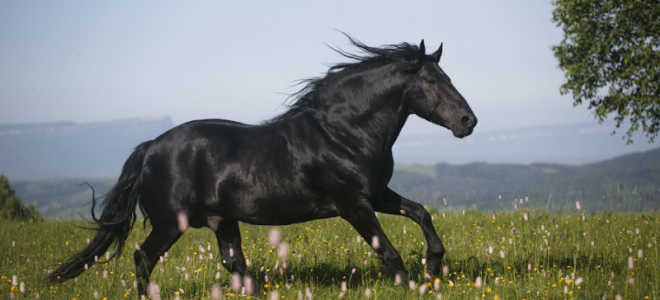
Note: people who are not familiar with the breed may mistakenly consider the Karachais to be evil, this is not so. At the first acquaintance with the owner, the animal demonstrates independence and strong character, but with the right approach and education, the horse quickly becomes a person's most devoted friend.
Color
The main and usual color of mountain Karachai horses is black or chestnut. But in fact, there are many more suit options. The breed standard includes red, gray and karak varieties. Striping on the back and shoulder blades is allowed.
Temperament and learning
Representatives of the breed are active and mobile. Horses have a strong and proud character, the owner must make an effort to win the loyalty of a cloven-hoofed friend. At the same time, the horse easily makes contact and, if he trusts the person, he will be devoted to him all his life. The intelligence of the mountain beauties is at a high level, the Karachais are trainable, trainable, and are often used in the circus arena.

Horse application
The main purpose of the breed is horse riding and team work. The physiology and character of horses determine the universal use of animals in various fields:
- equestrian tourism, hunting and sports;
- military service;
- participation in circus performances
- hippotherapy;
- transportation of goods.
Purebred representatives of the breed are used in breeding selection. Many new breeds have been developed on the basis of the Karachais.
Content advantages and disadvantages
The important advantages of the breed include:
- the ability to survive in various conditions;
- strong physique;
- endurance;
- undemanding care and living conditions;
- horses are adapted to living conditions in the mountains, in particular to thin air;
- the hooves are so strong that it is not necessary to shoe the Karachais;
- devotion to the owner;
- learning and curiosity.
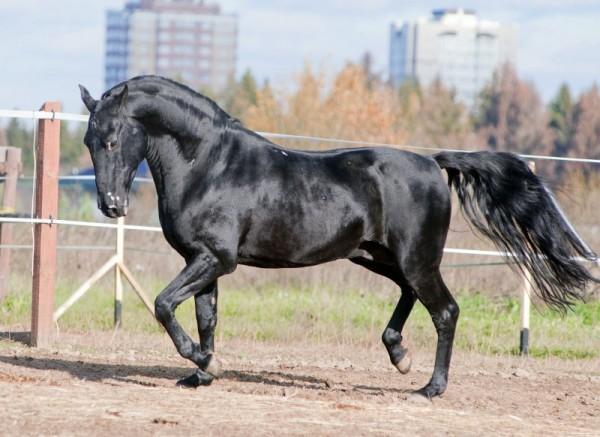
The disadvantages of the breed include:
- tendency to clubfoot;
- running speed is lower than the speed of riding rocks;
- in the conditions of life on the plain, horses begin to get sick more often.
Breeders like the original qualities of the breed. Karachay horses are recognized not only in our country, but also abroad, especially in Germany.
Features of growing and caring for animals
Representatives of the Karachai breed do not impose special requirements for the content; horses can live in the open air and feed on the grass roots. But if the owner loves his cloven-hoofed companion, then he will take care of creating comfortable conditions for the life of the mountain handsome.
Stable decoration
The basic rule for decorating a space in a stable is to maintain cleanliness, air ventilation, and the absence of drafts and excess moisture. Horses should be provided with feeders, drinkers and separate stalls. The space in the stable is calculated based on the proportion: 4 square meters per adult.
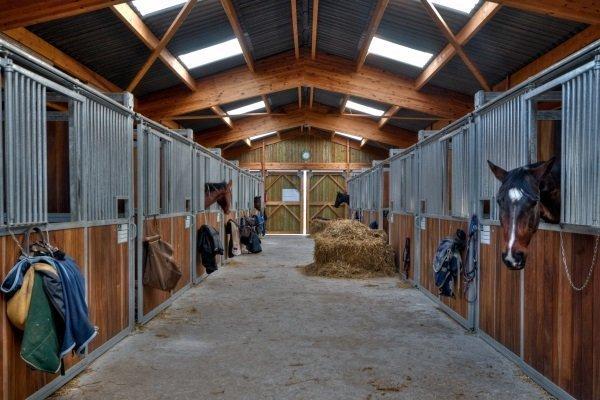
The stables use sawdust or straw as bedding. The substrate needs to be changed several times a week. Animals must have constant access to clean drinking water.
In addition to the ventilation and insulation system, artificial lighting must be installed in the stable.
Competent preparation of the diet
Historically, the Karachais did not eat fodder. The basis of the diet is grass, hay, haylage, fresh vegetables and meat and bone meal. Be sure to include table salt in your daily animal menu. The amount of feed and the ratio of ingredients depends on the age, mental and physical activity of the animals. To help your pets reach their full potential and achieve maximum performance, provide and properly formulate a diet for your livestock.
Main feeding
When grazing animals, the menu of cloven-hoofed animals includes oats, vegetables, legumes and vitamin complexes.When keeping horses in stables, the main diet consists of concentrated feed, hay, and fresh vegetables.
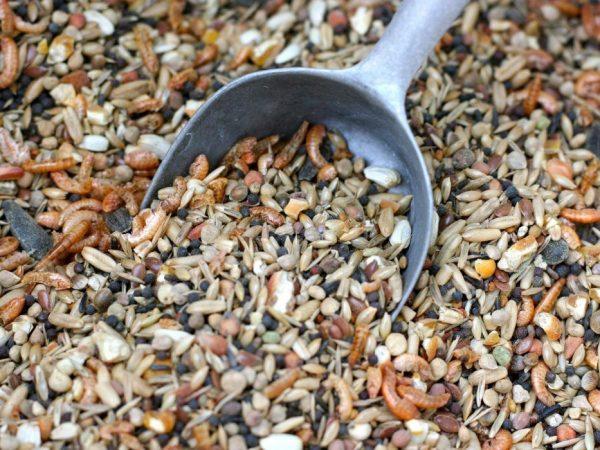
To improve the quality and quantity of milk, lactating mares are fed boiled beets and potatoes. For horses performing heavy physical work, increase the amount of concentrated feed, add food additives to the food.
Nutritional supplements
Currently, you can buy ready-made balanced mineral and vitamin complexes for horses in stores. At home, the following are used as nutritional supplements for horses:
- dried seaweed;
- a piece of chalk;
- meat and bone meal;
- fish fat;
- cake;
- yeast;
- linseed oil;
- nettles.
Important! When compiling a ration for animals, keep in mind that a horse must drink up to 50 liters of water per day.
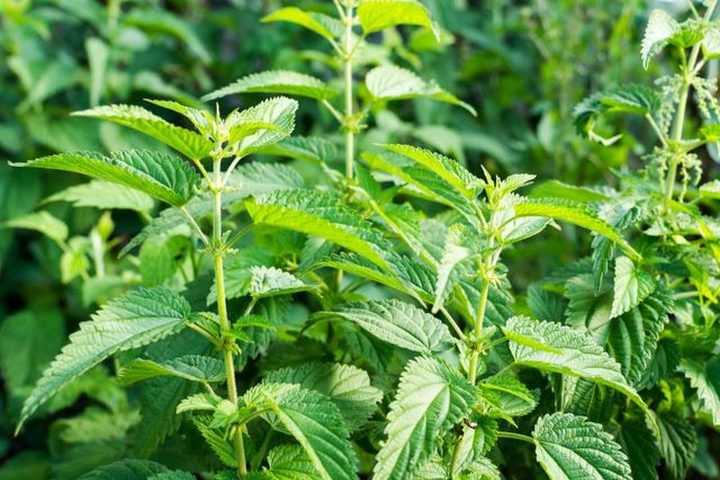
Hygiene and horse care
In order for a horse to always look neat and healthy, it is necessary to carefully monitor the cleanliness and hygiene of the animal. Horses are washed regularly; in the warm season, the number of baths is increased. The mane and tail are washed with a shampoo with conditioner, but you should not get carried away with household chemicals, animals may experience allergies or itching. After washing, the animals are wiped and combed with a soft brush. The hooves also need to be cleaned of dirt.
Grazing
Karachaev horses are free animals by their nature. They need the ability to graze. Karachais are taken out for walks no earlier than an hour after eating. When kept in a stable and without doing physical activity, the walking time is increased.
During grazing, horses get a significant part of the feed, which significantly reduces the cost of keeping artiodactyls, the owner can only feed the animals with vitamins and a small amount of forage. Grazing is carried out both in summer and winter seasons.
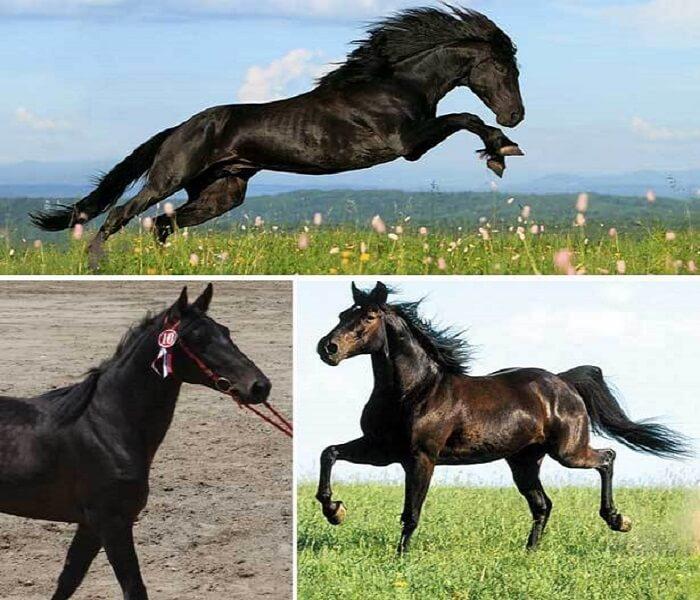
Horseshoe
Strong hooves of mountain horses do not need horseshoes, it is enough to monitor the hygiene of the feet and periodically show the hooves to the veterinarian.
Vaccinations and disease prevention
Persistent immunity and the ability to survive in adverse conditions were inherited by the Karachais from their ancestors. But when kept in a stable and in regular contact with other animals, it is necessary to vaccinate horses against a number of dangerous diseases:
- rabies;
- flu;
- anthrax;
- tetanus.
Horses will need to be dewormed regularly and shown to a veterinarian. When signs of disease appear, the animals are isolated and quarantined. Disease prevention measures include the following activities:
- routine vaccination;
- immunization;
- selection of a diet with a vitamin complex;
- regular disinfection of stables and utensils;
- examinations by a veterinarian;
- animal hygiene.
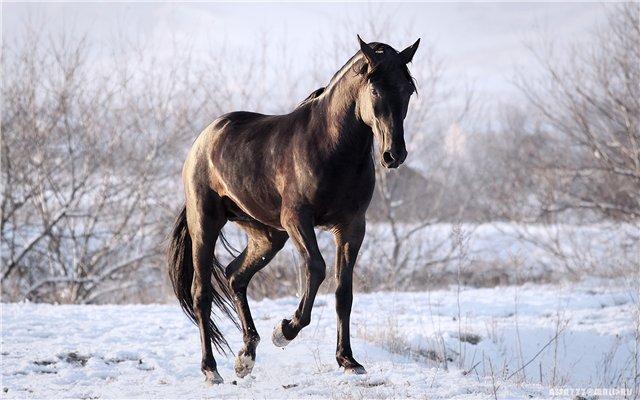
Itching, loss of appetite, unmotivated aggression, loose stools, bloating, flow from the eyes and an increase in body temperature are a reason for a veterinarian to examine the inhabitants of the stable. The selection of products for animals must be carefully considered, artiodactyls often suffer from digestive disorders and poisoning due to the consumption of stale, dirty vegetables.
About fertility and breeding
Mares of the Karachai breed are valued by breeders for their high fertility, while the foal is born independently, the survival rate of young animals is 86%. The best age for crossing is 3-4 years, while the mare is capable of producing high-quality viable offspring for 20 years.
The male is able to fertilize up to 30 females per year, while the probability of covering the female is 90%.
How much is?
Stallions and mares of the Karachai breed are in demand in sports competitions, agriculture, pedigree breeding, they are easily trained and devoted to humans, they are distinguished by endurance, innate vitality and health. For these qualities, representatives of the breed are popular in our country and abroad.
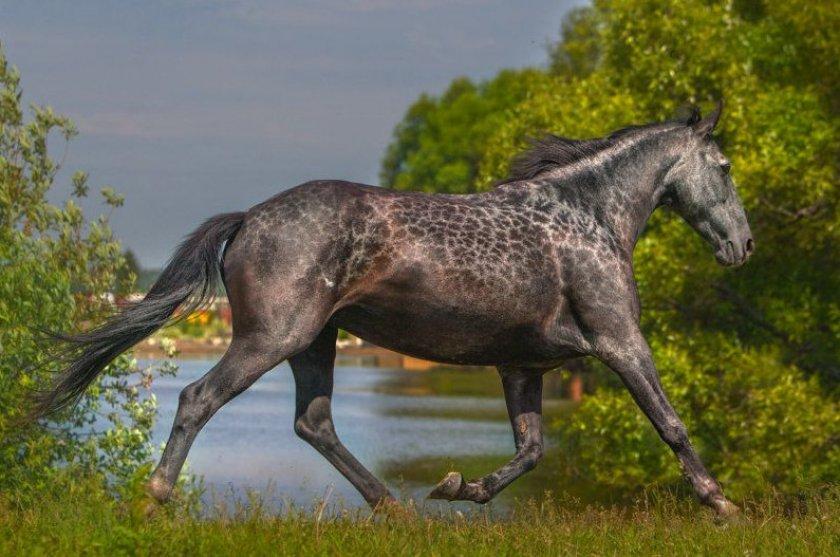
The value of a breeding horse depends on various factors, mainly on the purity of the line, age and pedigree. The value of a horse can be influenced by the health of the animal and its intended purpose. If a horse is purchased for agricultural work, then its average cost is 75,000 rubles, the cost of a horse for exhibitions will be about 300,000 rubles.
Interesting Facts
Interesting facts about the life and breed of horses from the North Caucasus:
- The breed practically disappeared during the Soviet era, especially during the Stalinist repression.
- The clan of Karachai horses includes 8 breeding lines.
- A horse lost in grazing is able to find its way home on its own.
- Stallions are capable of long hikes through snowdrifts and mountainous terrain.
- A herd of 30 mares can be managed by 1 stallion.
- Horses of the Karachai breed do not forget offenses and bullying, they are capable of revenge.
- In 1996, Karachai horses, together with people, conquered Elbrus.
Karachay horses amaze with their endurance and strong character. Independence and dedication are combined with intelligence and perseverance. Currently, the number of Karachais has decreased significantly, however, the breed remains in demand, both among amateurs and professionals in our country and abroad.
